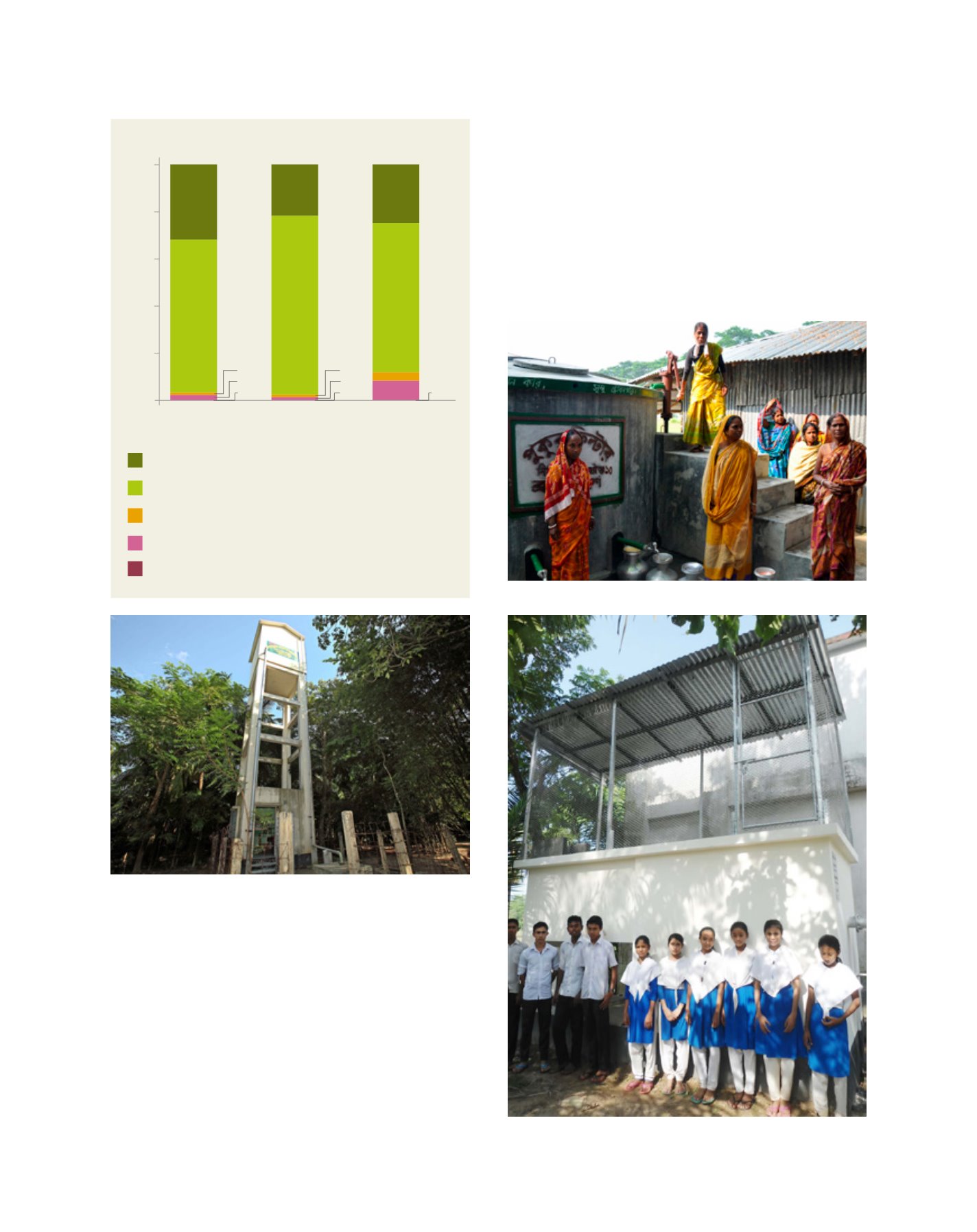

[
] 51
A B
et ter
W
or ld
hygiene promotion for men was conducted, after which ‘tea
stall meetings’ for men were initiated with great success.
To create an enabling environment and ensure sustain-
ability, BRAC WASH helped build capacity with targeted
community members, including sanitation entrepreneurs,
members of the local government and local elites. Even
though women do not constitute a large proportion of these
groups, BRAC WASH was as inclusive as possible. Continued
empowerment of women is still needed, for example, a more
insistent encouragement of female entrepreneurs.
The VWCs, on the other hand, have exemplified the
improvement of gender relations and the degree to which
women can be empowered. Each committee is made up of
eleven members – six women and five men – and has the
mandate to assess the water and sanitation conditions of the
village and identify issues. One man and one woman from
each committee is given leadership training. The VWC is also
responsible for identifying poor and ultra poor households
that need financial support.
A more detailed look at women’s participation shows very
encouraging results, with a large proportion of VWCs having
female members who speak out and participate in decision-
making. The success of the VWC indicates positive social
progress in a relatively short time span.
Pond sand filter
Iron removal plant at a school
Image: BRAC WASH
Image: BRAC WASH
Image: BRAC WASH
Piped water supply system
Latrine use by houshold member
100
80
60
40
20
0
Areas with
8 years of
intervention
Areas with
3 years of
intervention
Areas with
1.5 years of
intervention
32%
22%
25%
65%
76%
63%
4%
8%
1%
2%
0%
1%
1%
0%
0%
Benchmark + men and adolescent boys use the latrine +
faeces of infants/elderly/disabled end up in the toilet
Source: BRAC WASH
Nobody in the household uses the latrine for defecation or urination
Women and adolescent girls use the latrine
Benchmark + women and adolescent girls +
children aged 6 and above use the latrine
Benchmark + men and adolescent boys use the latrine
















